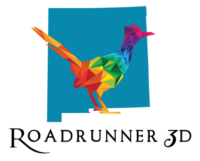Additive Manufacturing – A Solution for Production Needs
Whether you need a fast way to create prototypes, models, or low volume production-ready parts, additive manufacturing (3D printing) is a great option. Not everyone has access to a quality 3D printer in-house, but fortunately, there are companies who offer 3D print services.
The Benefits of Outsourcing Your 3D Printing
Getting started in the additive manufacturing business can be costly. You have to buy or lease the machines, secure an appropriate facility for said machines, hire skilled workers, and undergo training. Many manufacturers find a better solution is to outsource their 3D printing to additive manufacturers who already have the equipment and a trained workforce in place.
Some of the benefits of outsourcing include:
- Use 3D printing technology without having to make a large initial investment
- Expert knowledge of machinery and materials
- No long-term commitment with on-demand services
- Small or large-scale production runs
- No maintenance costs
- Partners who know what it takes to do the job right
On Demand
Whether you’re working on a deadline for a few thousand engineering grade parts or with a prototype, you need fast and reliable production turn times. 3D printing can simplify and speed up your manufacturing process, allow you to reverse-engineer legacy equipment parts, and improve your R&D process with rapid prototyping.
Since you’re printing on demand, you print what you need as you need it to reduce holding costs for inventory. An additional benefit of 3D printing is the ability to manufacture and experiment as much as you want without significant costs.
Within a single print run, you can do mass customization to produce dozens (or even hundreds) of unique parts.
On Shore
Using offshore manufacturers can lead to additional shipping costs, higher administrative costs, and tariffs. It may also be difficult to find trained workers that can meet your quality standards. Speaking of quality, if there’s a problem with your products and you have to ship them back for rework, lead times can get extremely long.
Shipping from China, for example can significantly add to your time of delivery. Once parts are complete, it can take more than a month to prepare the freight. Transit time can take one to two weeks. Once freight is delivered, it can take roughly another week to clear customs.
On Time
Even with low volume manufacturing, when you require hundreds to thousands of parts per week, 3D printing offers design flexibility while using cost-cutting efficiency to reduce material waste and reduce the time it takes to provide finished parts. Printers may also have special postprocessing systems to handle depowdering and part cleaning quickly.
3D processes do not require injection molds. This saves money and time. Some injection molds can take weeks or months to create.
On Budget
Most additive manufacturing houses use specialty software for preprocessing to minimize material and maximize the print run. Both the pre- and postprocessing systems reduce the time to get parts install-ready and makes the process more cost-effective.
Small-batch rapid prototyping lets you test and refine every aspect of your engineering design to ensure it’s dialed in before you go into full-scale production mode. We also offer functional prototyping for complex assemblies and applications.
Many additive manufacturers offer a variety of materials, from nylons to thermopolymers to metals to photopolymers, and custom finishes so your components meet your tolerances and specs, look great, and are also cost-efficient.
Talk to the 3D Printing Experts
Many 3D print houses have machine, materials, and design experts on hand to help walk you through the process – including us at Roadrunner 3D!
